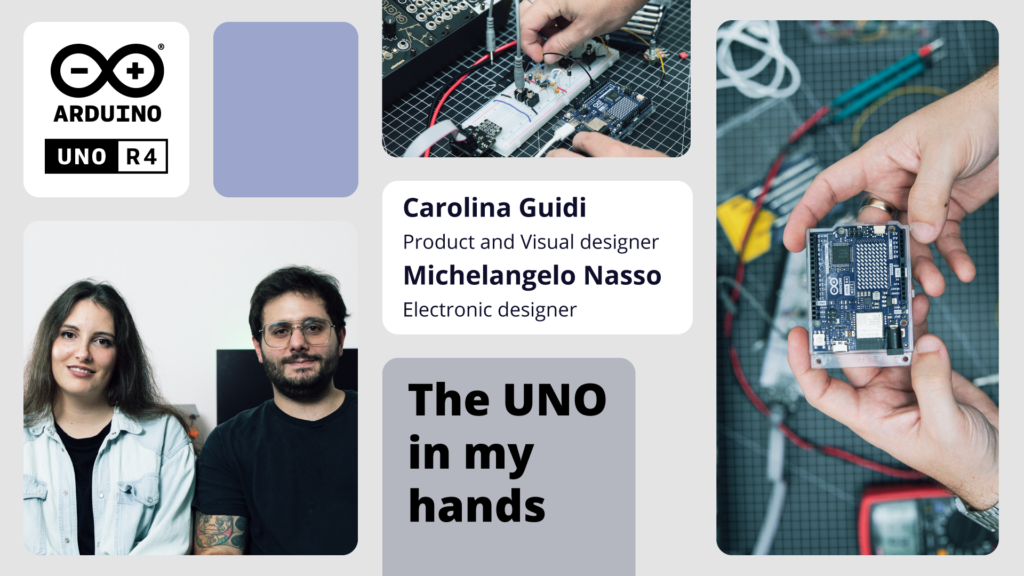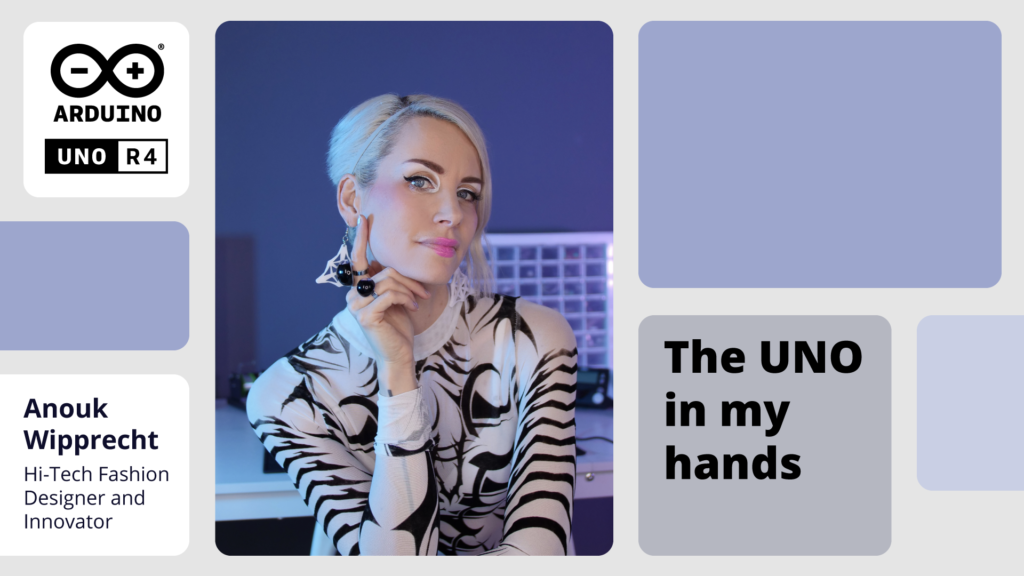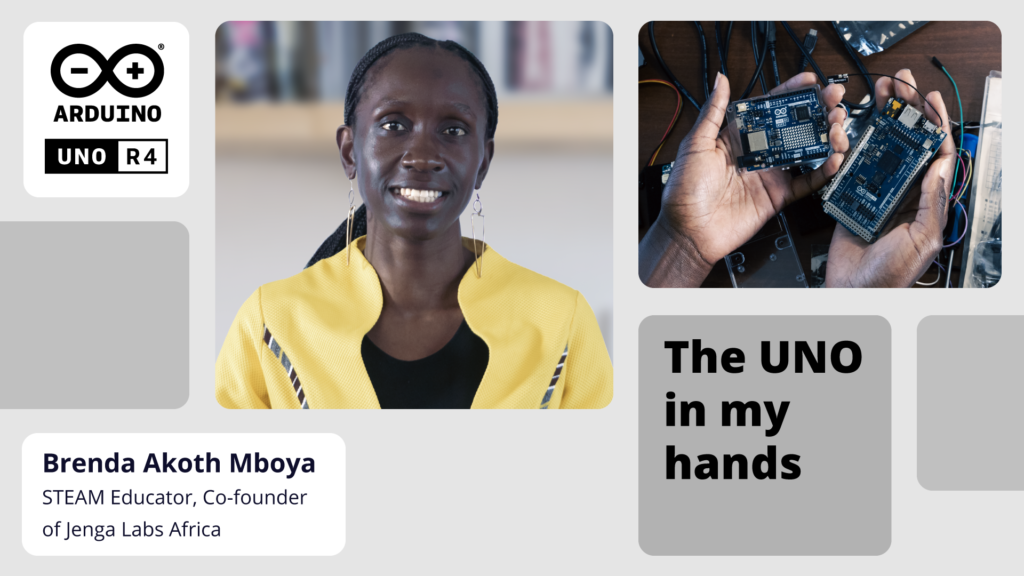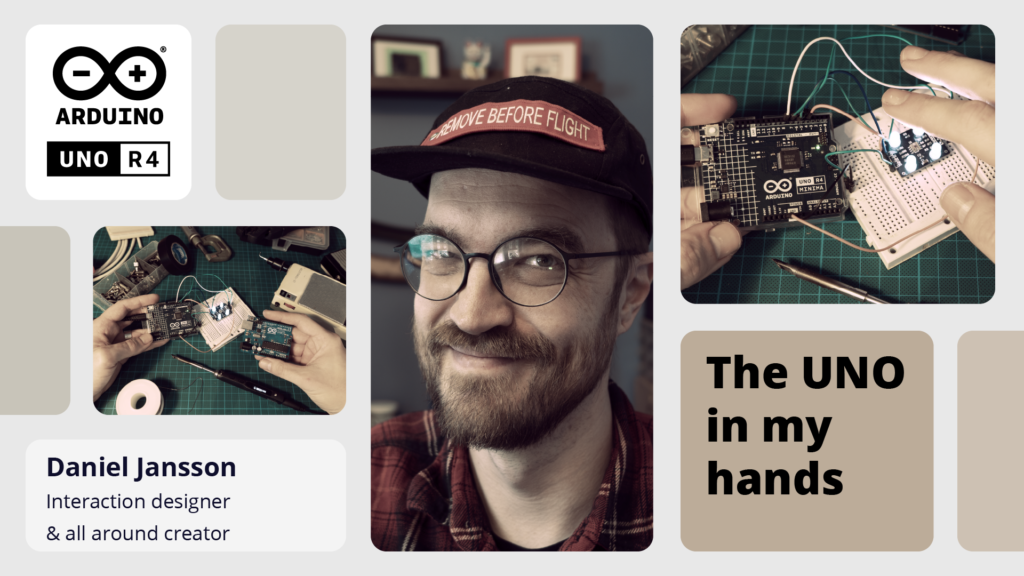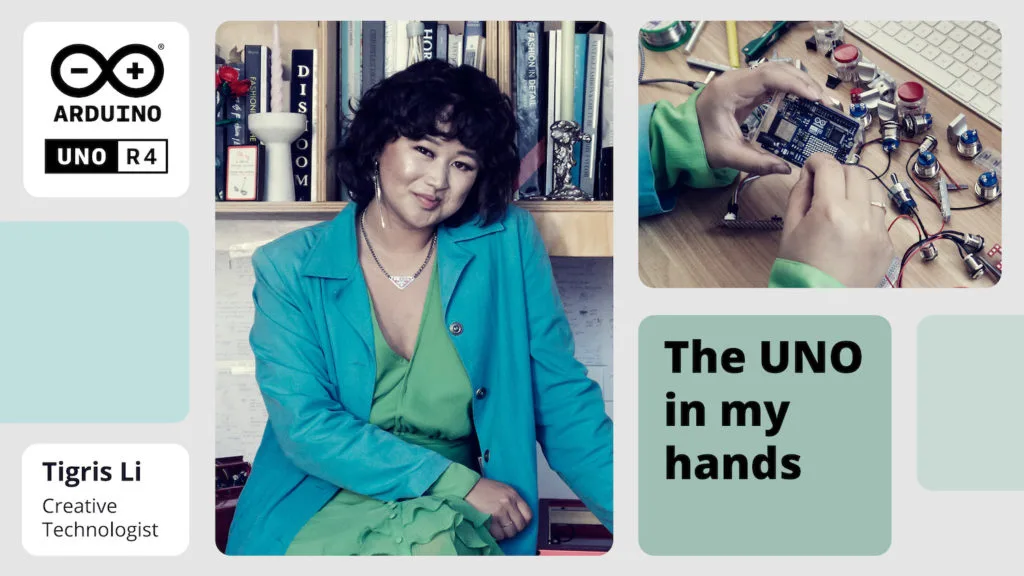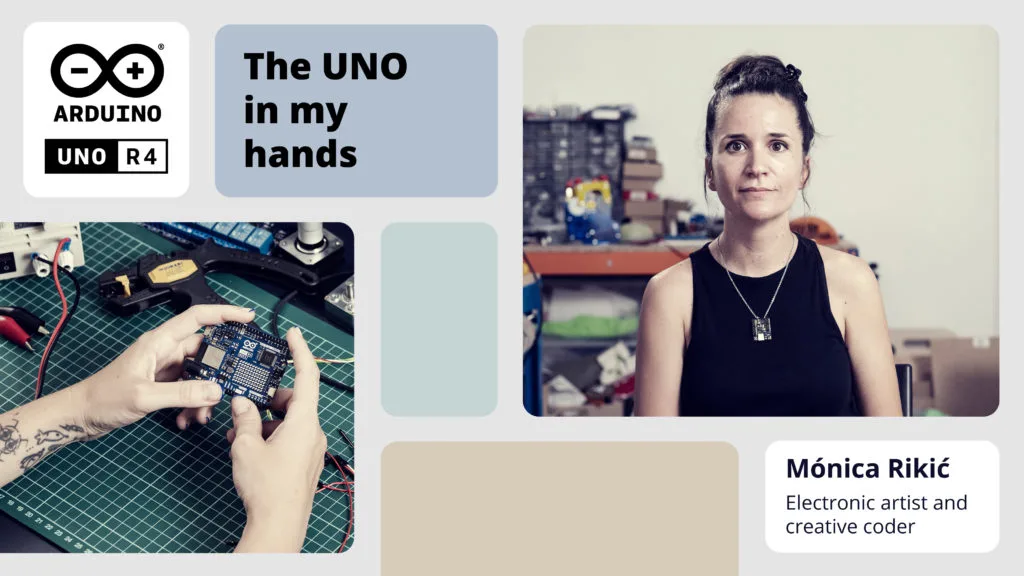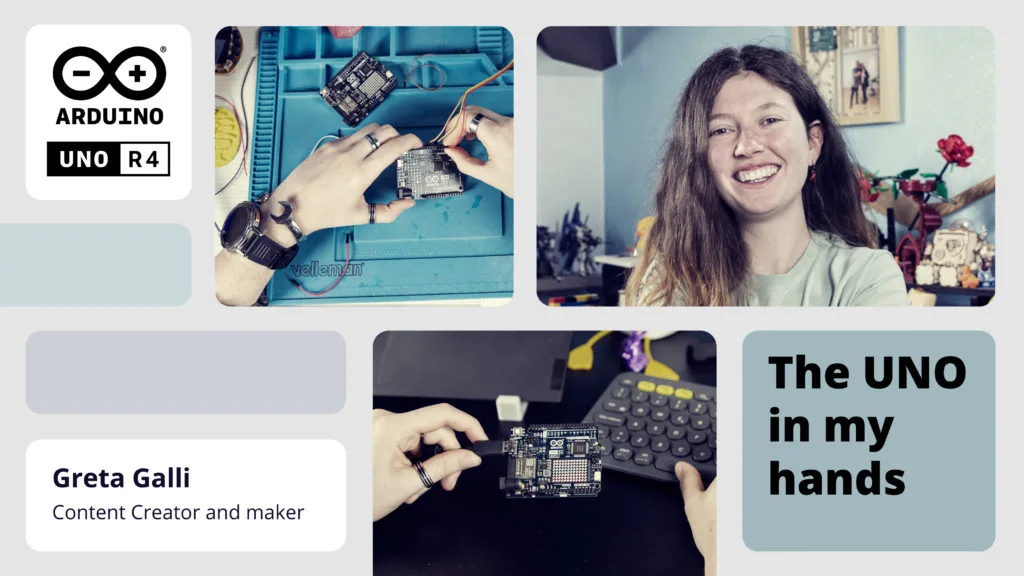Schlagwort: Arduino UNO R4 Stars
-

UNO R4 Stars: Meet Clatters Machines
Reading Time: 2 minutesThe launch of the Arduino UNO R4 marks a huge leap forward for our community. For us, it’s also the chance to celebrate the people who bring our ecosystem to life with their bright ideas, radiant enthusiasm, and shining insight. That is how the UNO R4 Stars blog post series began: to highlight makers who…
-

UNO R4 Stars: Meet Anouk Wipprecht
Reading Time: 3 minutesThe launch of the Arduino UNO R4 marks a huge leap forward for our community. For us, it’s also the chance to celebrate the people who bring our ecosystem to life with their bright ideas, radiant enthusiasm, and shining insight. That is how the UNO R4 Stars blog post series began: to highlight makers who…
-

UNO R4 Stars: Meet Brenda Mboya
Reading Time: 3 minutesThe launch of the Arduino UNO R4 marks a huge leap forward for our community. For us, it’s also the chance to celebrate the people who bring our ecosystem to life with their bright ideas, radiant enthusiasm, and shining insight. That is how the UNO R4 Stars blog post series began: to highlight makers who…
-

UNO R4 Stars: Meet Michael Cheich
Reading Time: 3 minutesThe launch of the Arduino UNO R4 marks a huge leap forward for our community. For us, it’s also the chance to celebrate the people who bring our ecosystem to life with their bright ideas, radiant enthusiasm, and shining insight. That is how the UNO R4 Stars blog post series began: to highlight makers…
-

UNO R4 Stars: Meet Daniel Jansson
Reading Time: 3 minutesThe launch of the Arduino UNO R4 marks a huge leap forward for our community. For us, it’s also the chance to celebrate the people who bring our ecosystem to life with their bright ideas, radiant enthusiasm, and shining insight. That is how the UNO R4 Stars blog post series began: to highlight makers who…
-

UNO R4 Stars: Meet Tigris Li
Reading Time: 3 minutesThe launch of the Arduino UNO R4 marks a huge leap forward for our community. For us, it’s also the chance to celebrate the people who bring our ecosystem to life with their bright ideas, radiant enthusiasm, and shining insight. That is how the UNO R4 Stars blog post series began: to highlight makers who…
-

UNO R4 Stars: Meet Monica Rikic
Reading Time: 3 minutesThe launch of the Arduino UNO R4 marks a huge leap forward for our community. For us, it’s also the chance to celebrate the people who bring our ecosystem to life with their bright ideas, radiant enthusiasm, and shining insight. That is how the UNO R4 Stars blog post series began: to highlight makers who…
-

UNO R4 Stars: Meet Greta Galli
Reading Time: 2 minutesThe launch of the Arduino UNO R4 marks a huge leap forward for our community. For us, it’s also the chance to celebrate the people who bring our ecosystem to life with their bright ideas, radiant enthusiasm, and shining insight. That is how the UNO R4 Stars blog post series began: to highlight makers who…
